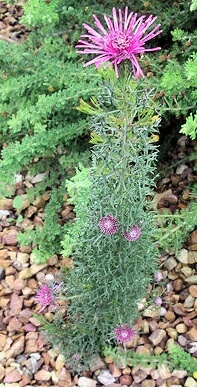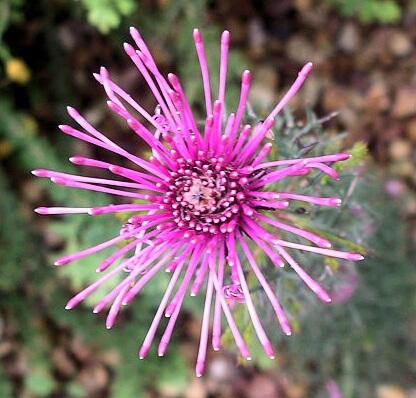Isopogon formosus is a plant that you probably won’t find in many plant nurseries. It is commonly known as the Rose Coneflower. It’s mainly restricted to Australian Native Plant nurseries probably because it can be considered in some circles to be difficult to grow.
I’d successfully grown it before in my last garden so when I came across it about a year ago I thought it might be worth trying in my new garden.
More...
Growing Isopogon formosus

Isopogon formosus with one mature flower and the others still developing.
I did have some trepidation though, as it is a member of the Proteaceae family and I wasn’t sure how it was going to cope with the phosphorus in my soil. Twelve months later though it is actually surviving quite well and in fact I’d forgotten it was in my garden until it came into flower recently as this is one of the real features of this Isopogon.
Despite having prickly foliage, which isn’t always everyone’s cup of tea it does blend quite well into the rest of your garden right up until it comes into flower. When this happens, you really can’t help but notice the bright purple cones like flowers. They really do put on quite a show.
The Isopogon in my garden is still only a year old so after it finishes flowering I’ll give it a light prune so that next season it will bush out and provide lots and lots of flowers.
Ideal Conditions for Growing Rose Coneflower
The secret to growing this Isopogon formosus is to grow it in reasonably well drained soil. It will grow quite happily in sand or gravel but if you have a clay soil just mound your garden bed or plant on a slope.

A bit of moisture during the summer is also recommended but I’m sure this Isopogon only survived on rainfall last summer so I’d say that it is a reasonably drought tolerant plant.
It’s also recommended not to grow it in hot humid climates but that's just a rule of thumb so if you do have this type of climate I’d say that the rewards of growing this Isopogon are certainly worth giving it a try.
So if you do happen to come across an Isopogon formosus in a nursery I’d say give it a go, I’ve found it reasonably easy to grow. It will grow into a rounded shrub of about 1 metre if you prune it after flowering and Isopogon formosus will reward you with lots of bright purple flowers each spring.
Published on June 24, 2023 by AGT
Last Updated on January 27, 2024




